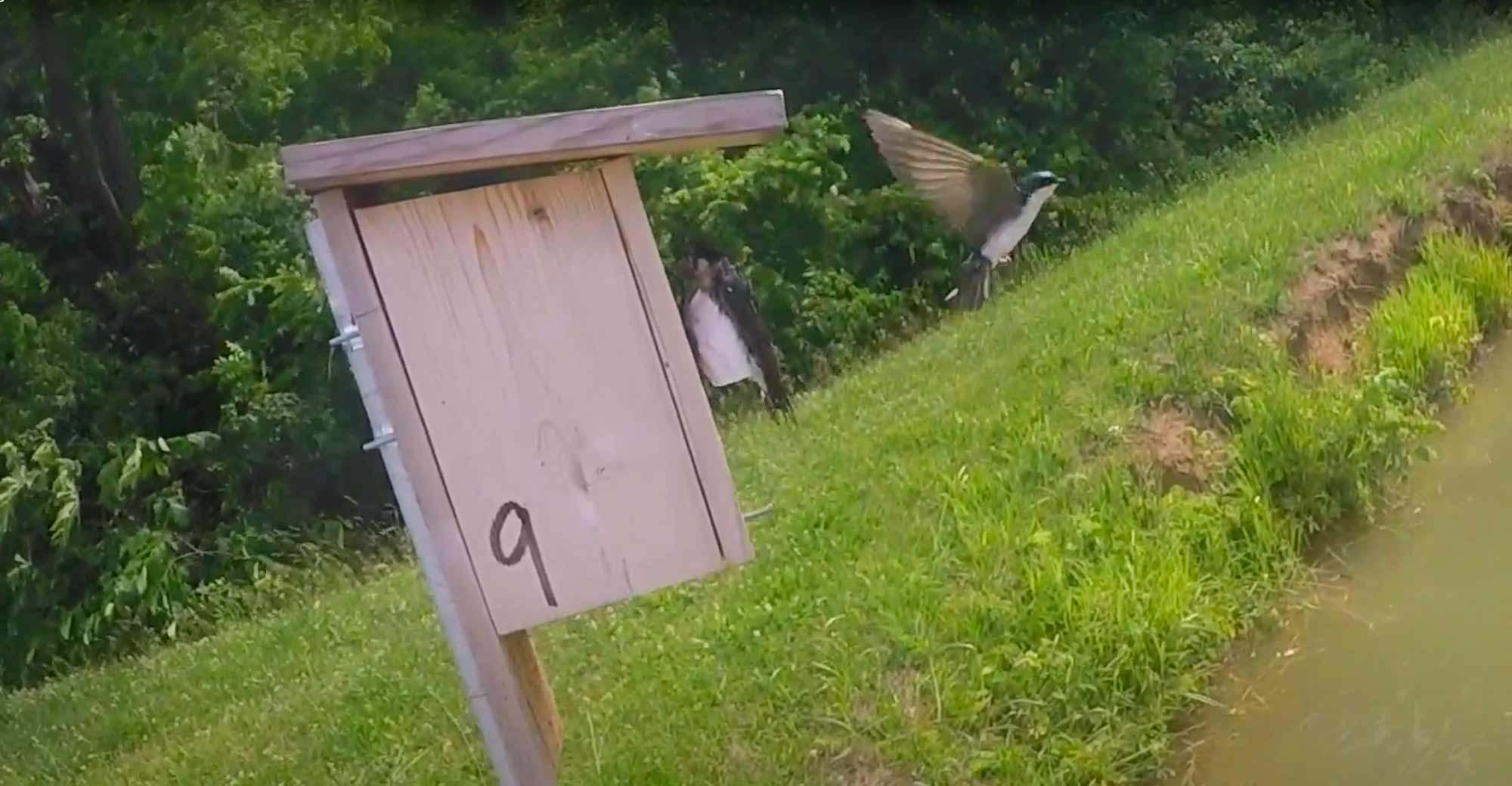Before you Begin
Make sure you complete Exploring Behavior with Our Feathered Friends Part 1 before continuing!
Materials Checklist
- Printed worksheets (optional)
- Pen or pencil
How exactly do we measure a bird’s aggressiveness?
Research in the Rosvall Lab has shown that more aggressive tree swallows – especially the females – are more likely to gain nestboxes, which they need to raise their babies. In the last activity, we saw a real-live territorial intrusion from a young female, and we brainstormed how aggression might be adaptive. Now, let’s get ready to watch a simulated territorial intrusion. We’ll see a pair of tree swallows attacking a fake tree swallow (a ‘decoy’) that’s been placed at the entrance to their nestbox. Scientists use these fake intrusions to measure aggressiveness in the territory-owning birds. The simulated fight gives a standardized measure for everyone, just like how using a ruler or scale gives us a standardized tool to measure height or weight.
Behavioral biologists begin by compiling and describing the behaviors they observe in the tree swallow. This comprehensive list of behaviors is called an ethogram.
Let’s complete the tree swallow ethogram in our worksheet:
A. Behaviors in an ethogram have longer, very detailed definitions. Some ethograms use pictures to show behaviors. When we’re watching an animal, we need an easier, shorter name for each behavior. Match these short-hand behavior names to the definitions in the worksheet ethogram: hit, peck, vocalization, and on decoy.
B. Now that you’re ready, watch the video. What other behaviors do you see? List 2 more behaviors, create a detailed definition, and add them to the open rows in your ethogram.
C. Count how many times you see each behavior in the video. Record in the ethogram.
D. A behavioral state is a behavior that has a relatively long, stable duration (“A tree swallow is sitting on the decoy”). In contrast, behavioral events are more briefly occurring behaviors (“A tree swallow pecked the decoy”). Look around you – what is a quick event and a long state that you can perform?
There are 2 tree swallows in this video that have very different reactions to the fake tree swallow decoy. Let’s start to explore this variation in behavior!
E. Can you spot the difference? What are the most common behaviors each tree swallow is performing?

F. Can you spot any colored leg bands? Pause the video if you have to. We put leg tiny bands (like an ID bracelet) on the birds to keep track of them over the years. The silver band has a unique 9-digit number. The colorful plastic band tells us what sex the bird is – red bands mean that bird is a female, blue mean a bird is a male. We added these bands so we can tell them apart while watching them behave in the wild.
G. One bird is more aggressive than the other. Is the more aggressive bird in the video male or female?
Extra Credit
You’re a behavioral scientist now! Try out these Bonus Activities to practice observing behavior, measuring behavior in a reliable way, and posing hypotheses to explain variation in behavior.


